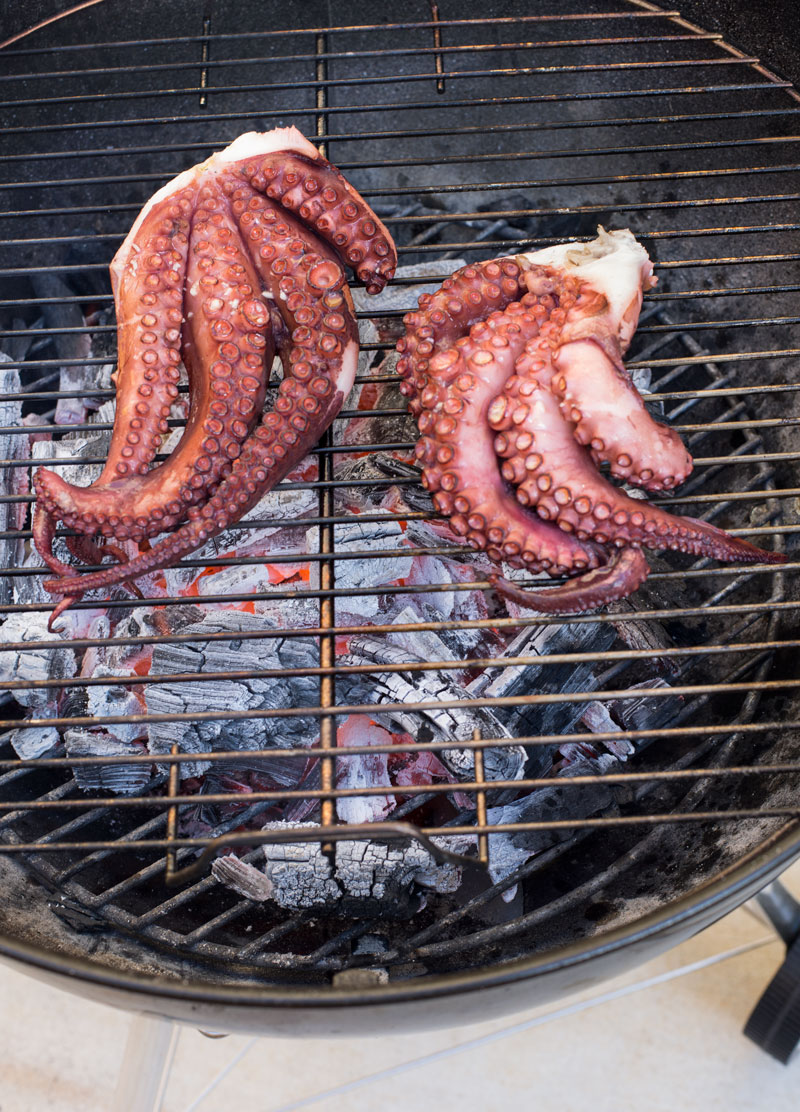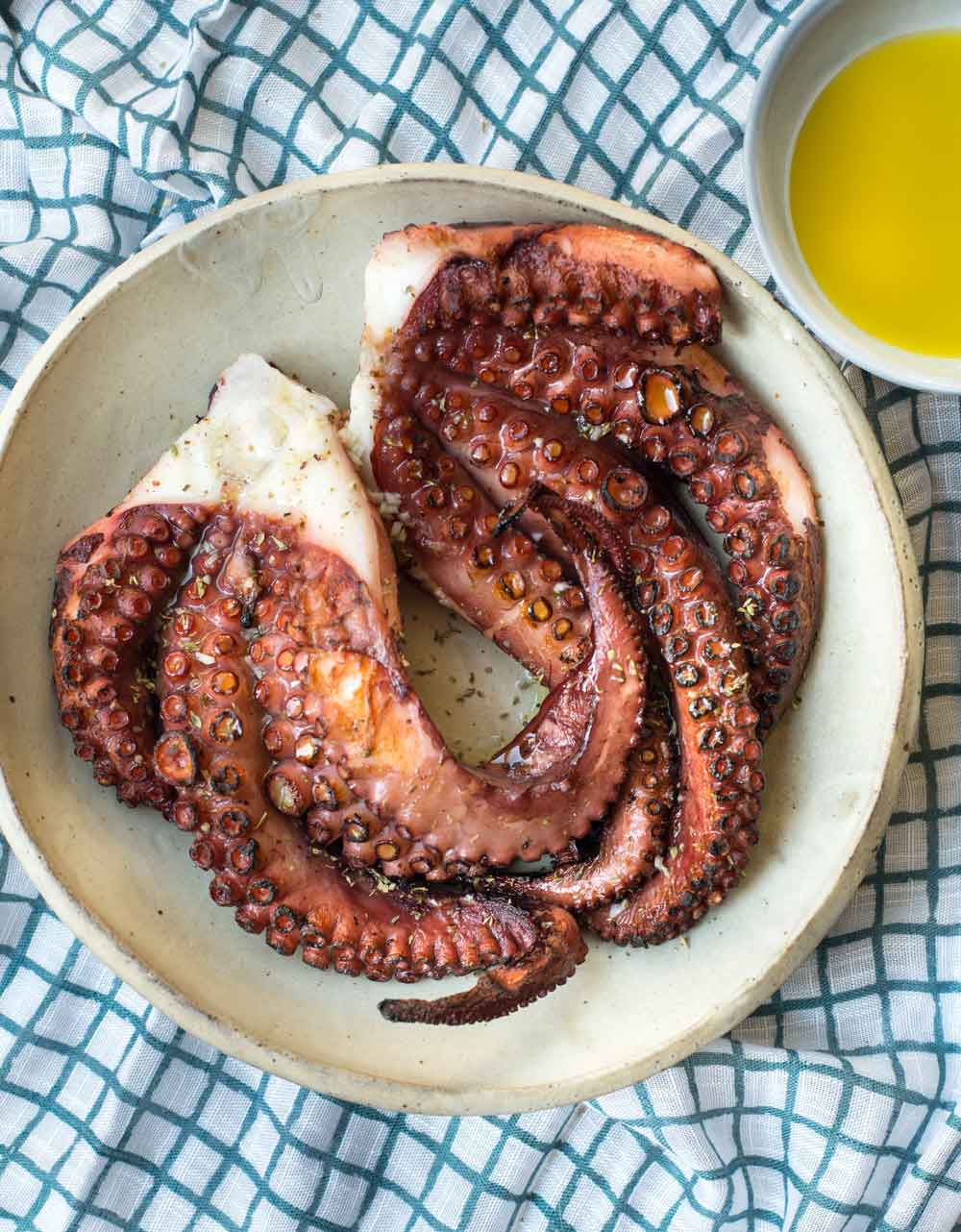
Although I’m neither Italian nor Italian-American, this year I’ve decided to adopt the Italian tradition of fish for Christmas Eve/Day dinner. The Feast of the Seven Fishes (Festa dei sette pesci) typically consists of at least seven fish/seafood dishes — the number of dishes varies by family.
Per Wikipedia: There are many hypotheses for what the number “7” represents. Seven is the most repeated number in the Bible and appears over 700 times. One popular theory is the number represents completion, as shown in Genesis 2:2: “By the seventh day God completed the work he had been doing; so on the seventh day he rested from all his work.” During the feast of the seven fishes, participants celebrate the completion of God’s promise of the Messiah through baby Jesus. Other theories include: that the number represents the seven Sacraments of the Roman Catholic Church; or it represents the Seven hills of Rome that surround the city. It may represent perfection (the traditional Biblical number for divinity is three, and for Earth is four, and the combination of these numbers, seven, represents God on Earth, or Jesus Christ). The feast’s components may include some combination of anchovies, whiting, lobster, sardines, dried salt cod, smelts, eels, squid, octopus, shrimp, mussels, and clams.
Let’s just call it The Feast of the Fishes/Shellfish/Cephalopods.
This mini-feast celebrates Octopus.
One of my favorite foods, hands down, has to be octopus. Maybe it’s because I don’t get to eat it very often (for one, it’s not always easy to find). So when I do come across octopus, it’s the ultimate treat. When properly prepared, octopus is tender with just the right amount of chew. And nope, it’s not rubbery (provided that you tenderize it first).The very first time I prepared octopus (over ten years ago, when I just began my adventures in the kitchen), didn’t realize you needed to tenderize octopus. I removed the tentacles and threw them straight onto the grill. Those tentacles were so rubbery, my jaw was sore for a few days afterward. Lesson learned.So, how does one tenderize an octopus? Depending on whom you ask/what you read, tenderizing octopus can be achieved through various methods: 1) hanging the octopus on a clothesline in the sun, 2) beating it with a stone, 3) putting it through the spin cycle in your washing machine, 4) dipping it in boiling water, three times, then cooking it in a copper pot, 5) cooking it with corks, and 6) simmering it with low heat for approximately for 40 to 60 minutes.
I’ve opted for #6. Place the whole octopus in a Dutch oven or large pot with a little bit of olive oil and let it simmer over low heat until the octopus turns pink and is tender to the bite. The octopus will exude a lot of water/liquid and shrink quite a bit. Once tender, grill it up.
Look for Atlantic octopus (from Spain or Portugal). Indonesian octopus, which I more commonly encounter, is an entirely different species with an entirely different taste. Atlantic octopus has a distinct salinity to it. It’s briny and clean, and tastes like the ocean. Octopus has been over-fished for a while, though is slowly making a comeback (for more information consult the Monterey Bay Aquarium Seafood Watch website).
I’ve had renditions of octopus in which the octopus was “chef-ified” (read: overly manipulated) to the point that I no longer recognized my beloved cephalopod.
The beauty of octopus is that it tastes best when prepared and served with little, if any, manipulation. When in doubt, go where the Greeks go. Or better yet, walk into just about any fish taverna in Greece and you’ll find octopus (whole fish too) prepared at it’s best. Hung on a clothesline for a day to remove most of its water content, then simply grilled and dressed with nothing more than a little olive oil and lemon (ladolemono).




Ladolemono = extra virgin olive oil + lemon juice + garlic
And of course, you’ll want to a big plate of horta (i.e., wild greens) to accompany your octopus …
Octopus with Ladolemono
1 (4-pound) octopus
extra virgin olive oil
sea salt and freshly ground black pepper
Add two tablespoons of olive oil to a Dutch oven. Add the octopus and simmer over low heat for about 40 minutes, until the octopus turns bright pink and is tender to the bite. Remove from the pot. When cool enough to handle, slice off the tentacles (discard the head).
Prepare a charcoal grill (wood fire or gas grill). Lightly brush the octopus tentacles with olive oil. Season with salt and pepper. Grill (just a few minutes per side) until nicely browned and crispy on the outside, but still moist on the inside.
Serve with a drizzle of ladolemono.
Ladolemono
1/2 cup extra virgin olive oil
4 tablespoons lemon juice
1 small garlic clove, thinly sliced
pinch of sea salt
Place the olive oil, lemon juice, garlic, and salt in a blender jar. Blend until lightly emulsified. Alternatively, whisk by hand.











4 comments
Amy (Savory Moments)
Beautiful! Thanks for the tips of properly tenderizing octopus. It's something I haven't tried making at home yet. Merry Christmas!
Amy (Savory Moments)
Beautiful! Thanks for the tips of properly tenderizing octopus. It's something I haven't tried making at home yet. Merry Christmas!
Oscar
Hello from Galicia!
Here, were octopus with olive oil and pementón (paprika, sort of…) is one of our local culinary treasures , we always cook it once defrozen. Before that tech trick, people used tho beat really hard the poor beast ( alrready dead!).
You must also use your 4) tip, so it doesn´t peel off.
Thanks for your blog, great recipes and amazing pictures!
James McNulty
No need to throw away the head. Clean and eat. Octopus is reasonably expensive.